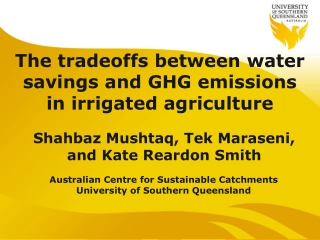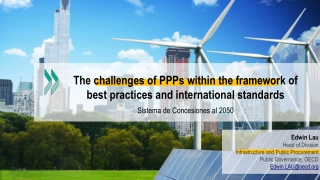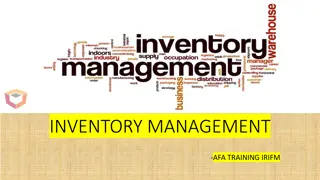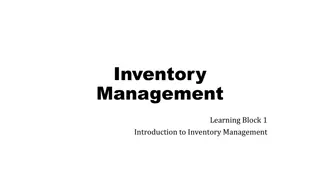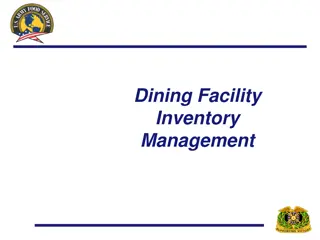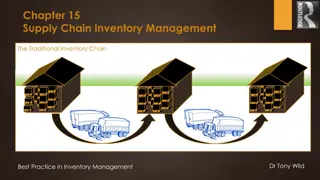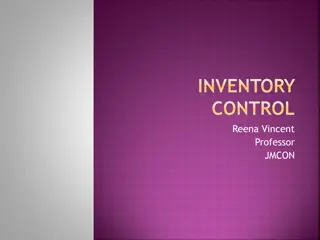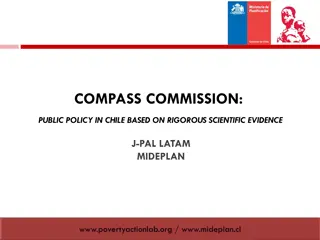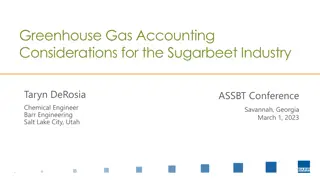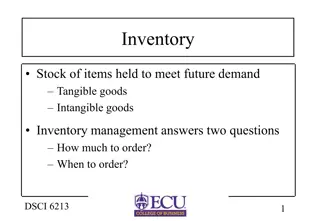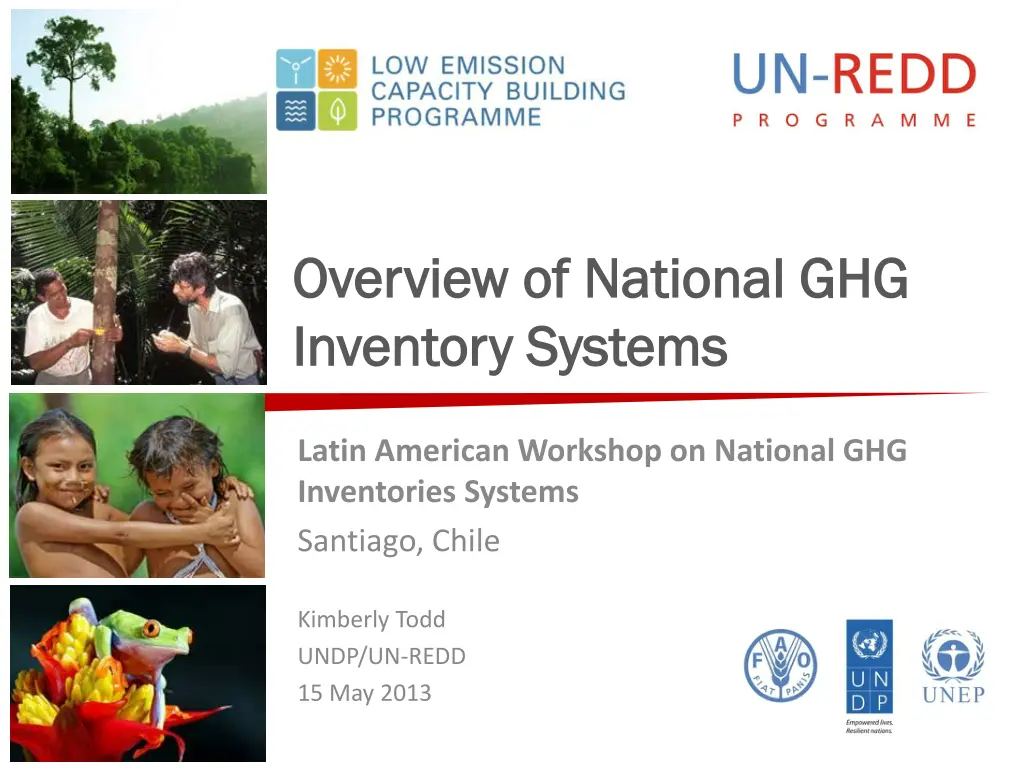
National GHG Inventory Systems Overview
Learn about National GHG Inventory Systems from a workshop in Santiago, Chile. Understand the elements of a National Inventory System, sustainability criteria, and the inventory production cycle. Discover how an effective NIS streamlines the inventory process and the three main phases of inventory management.
Download Presentation

Please find below an Image/Link to download the presentation.
The content on the website is provided AS IS for your information and personal use only. It may not be sold, licensed, or shared on other websites without obtaining consent from the author. If you encounter any issues during the download, it is possible that the publisher has removed the file from their server.
You are allowed to download the files provided on this website for personal or commercial use, subject to the condition that they are used lawfully. All files are the property of their respective owners.
The content on the website is provided AS IS for your information and personal use only. It may not be sold, licensed, or shared on other websites without obtaining consent from the author.
E N D
Presentation Transcript
Overview of National GHG Overview of National GHG Inventory Systems Inventory Systems Latin American Workshop on National GHG Inventories Systems Santiago, Chile Kimberly Todd UNDP/UN-REDD 15 May 2013
Presentation Outline Presentation Outline What is an National Inventory System? What is a sustainable National Inventory System? Streamlining the Inventory Process Institutional, procedural and legal arrangements Conclusions
What is a National Inventory What is a National Inventory System (NIS)? System (NIS)? A national inventory system incorporates all the elements necessary to: Estimate, report and archive GHG emissions and removals for energy, industrial processes, solvents, agriculture, LULUCF, waste Legal Institutional arrangements Procedural arrangements arrangements High quality GHG inventory that meets needs of policy-makers, researchers and public
What is a Sustainable Sustainable NIS? ? Ability to develop high quality inventory at regular intervals (e.g., annually, every 2-4 years, etc) Continually improve emissions and removals estimates Focus resources on most significant key sources Sources of data: identify, appropriately archive and make regularly accessible Transparently document inventory process an expert should be able to reproduce A complete and accurate inventory is the foundation for analysis of a range of energy and environmental issues, as well as MRV
Inventory Production Cycle Inventory Production Cycle IPCC 2008
An Effective NIS can streamline the An Effective NIS can streamline the three main phases of inventory three main phases of inventory process process General rules of procedure Source-specific rules of procedure Workplan, budget, timeline Guidance manual Elaborating a QA/QC plan Inventory improvement strategy 1. Inventory planning National inventory report Updated improvement strategy QA/QC 2. Inventory preparation Documentation Archiving Reporting to UNFCCC Awareness raising (national level) 3. Inventory management
Institutional Arrangements Institutional Arrangements Consist of a set of formal arrangements (e.g., regulations, MoUs, etc.) that rules the flow of resources, data, information, among elements of the NIS Objectives: 1. To provide the financial and human resources as well as legal authority to ensure that NIS functions will be entirely and efficiently performed 2. To set up the framework of provisions which rule those functions
Why are legal arrangements Why are legal arrangements (e.g., Act, decree) needed? (e.g., Act, decree) needed? To ensure resources are budgeted To define responsibilities (legal entity) and designate a single entity responsible for inventory management To establish a system for collecting data and allow for timely acquisition of all necessary data esp. from national statistical agencies, private companies, other key sources To ensure access to inventory data for inventory compilers
An Illustrative Example of An Illustrative Example of Institutional and Procedural Institutional and Procedural Arrangements Arrangements Lead institution Cooperating institutions Team coordinator Data provider s Data providers Universities Sectoral experts Database manager QA/QC manager Consultants Research institutions Strategy / workplan in place Documentation and Archiving system in place QA/QC plan developed Reporting system in place
Conclusions Conclusions National inventory systems are foundation for complete and rigorous inventories Results can be achieved by different strategies National circumstances need to be taken into account Documentation and archiving are critical success factors for the sustainability of the system Resources should be focused on key sources Important to appoint coordinators at IPCC sectoral level Inventory process should be transparently documented an expert should be able to reproduce Inventory development is iterative process improving over time
Useful Resources Useful Resources 1. Handbook: Managing the National GHG Inventory Process (UNDP-GEF, 2005) http://ncsp.undp.org/document/managing-national-greenhouse-gas- inventory-process 2. US EPA Template Workbook: Developing a National GHG Inventory System www.epa.gov/climatechange/Downloads/EPAactivities/Complete- Template-Workbook.doc 3. WRI MAPT National GHG Inventory Case Study Series https://sites.google.com/site/maptpartnerresearch/national-ghg- inventory-case-study-series
Thank you! Questions? Thank you! Questions? Kimberly Todd Kimberly Todd kimberly.todd@undp.org kimberly.todd@undp.org

